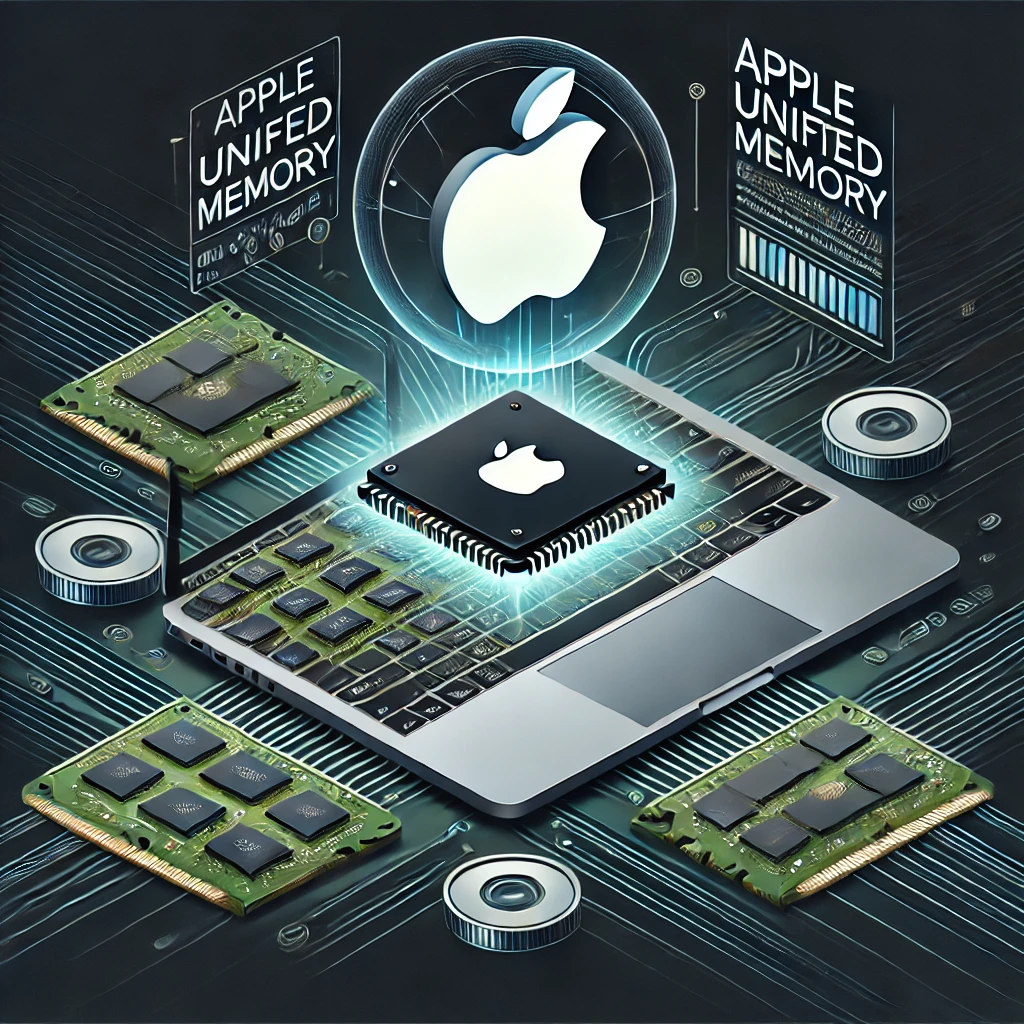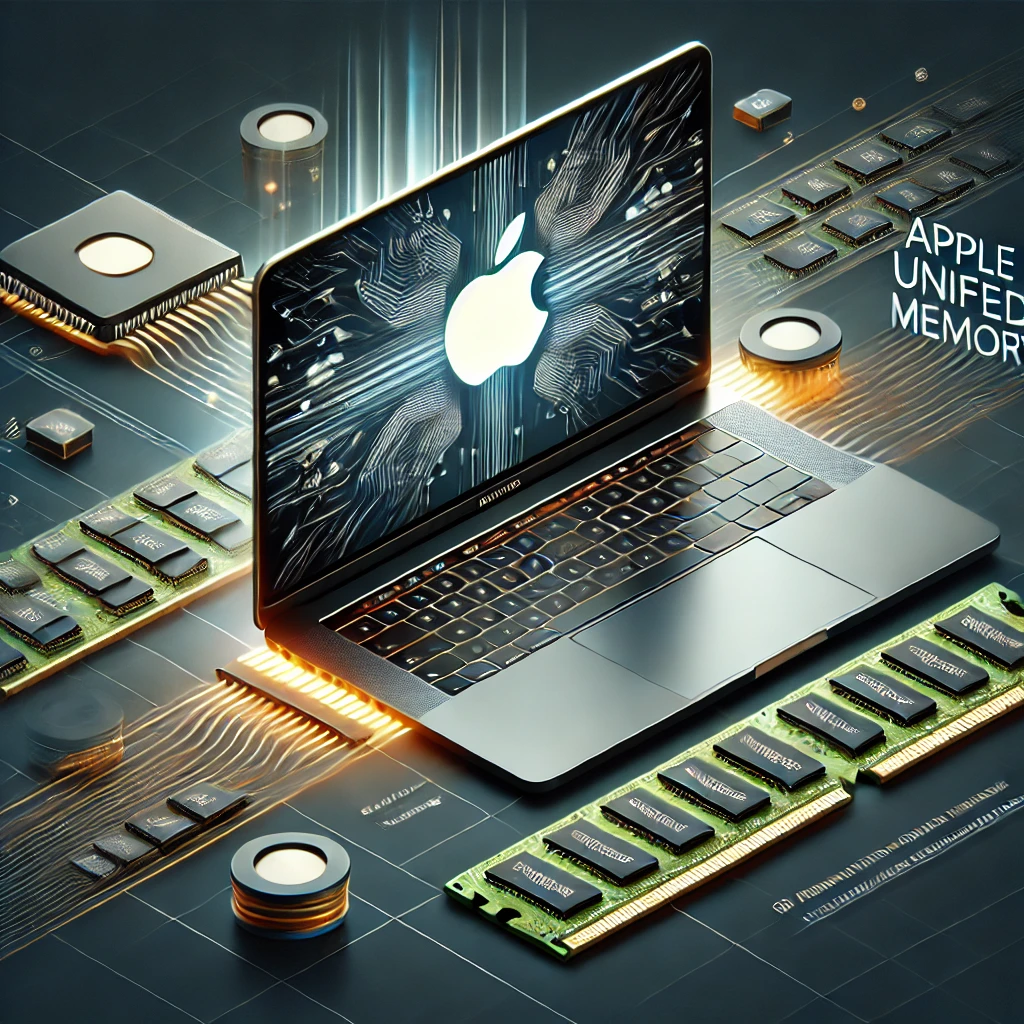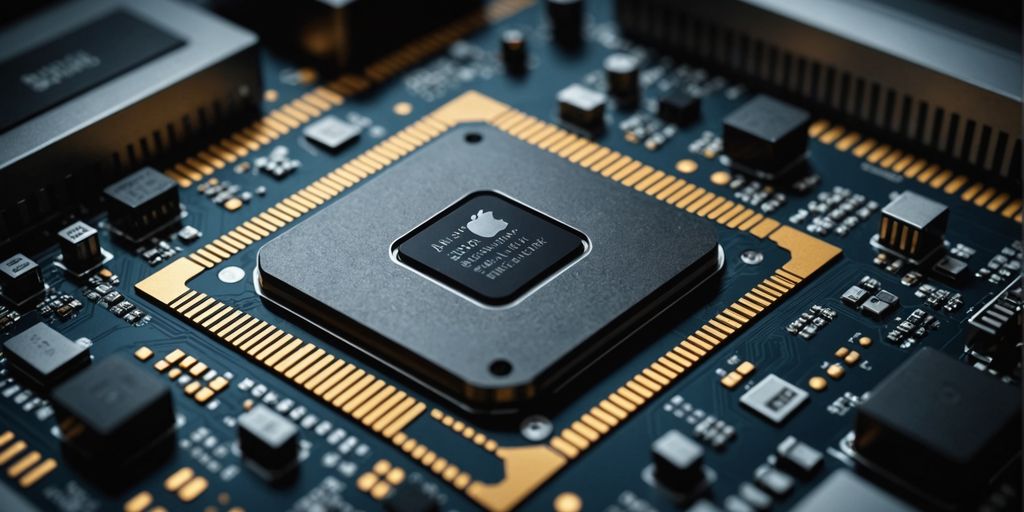Apple has changed how its devices use memory with the introduction of Unified Memory. This new approach, part of the Apple Silicon architecture, combines memory for the CPU, GPU, and other components into a single pool. This article will explain what Apple Unified Memory is, its advantages, and how it differs from traditional memory.
Key Takeaways
- Apple Unified Memory combines memory for the CPU, GPU, and other components into one pool.
- It offers better performance and energy efficiency compared to traditional memory.
- Unified Memory simplifies memory management for developers.
- Apple’s M1 chip is optimized to take full advantage of Unified Memory.
- Unified Memory is not user-upgradable, so choose your configuration wisely when buying a Mac.
What is Apple Unified Memory?

Apple Unified Memory is a new way that Apple designs its computers to use memory. Instead of having separate memory for the CPU and GPU, they share the same memory. This makes the computer faster and more efficient.
Benefits of Apple Unified Memory
- Speed: Since the CPU and GPU share the same memory, they can access data faster.
- Efficiency: Less energy is used because data doesn’t need to be copied between different memory locations.
- Simplicity: It simplifies the design of the computer, making it easier to manage memory.
How Apple Unified Memory Works
Unified Memory is high-speed and low-latency. Both the CPU and GPU can access the same memory bank, which means they don’t need to transfer data between separate memory pools. This leads to better performance and efficiency.
Compatibility with Apple Devices
Apple Unified Memory is available on devices with Apple’s M-series chips. This includes newer models of MacBooks, iMacs, and Mac Minis. If you have one of these devices, you are already benefiting from this advanced memory architecture.
Advantages of Apple Unified Memory
Improved Performance
Apple Unified Memory integrates the CPU, GPU, and Neural Engine into a single memory pool. This enhances performance and efficiency for seamless computing. By reducing the number of components on a chip, data transfer times are minimized, making your Mac faster.
Energy Efficiency
Unified Memory is designed to be energy-efficient. With fewer components and a streamlined architecture, it consumes less power. This means longer battery life for your devices, allowing you to work or play for extended periods without needing to recharge.
Simplified Memory Management
With Apple Unified Memory, memory management becomes simpler. There’s no need to allocate separate memory for different processing units. This unified approach reduces complexity and makes it easier for developers to optimize their apps.
Unified Memory on Mac integrates CPU, GPU, and Neural Engine into a single memory pool, enhancing performance and efficiency for seamless computing.
Apple Unified Memory vs Traditional Memory
Differences in Architecture
Apple’s unified memory architecture is a game-changer. Instead of having separate memory banks for the CPU and GPU, both processing units share the same memory pool. This reduces the number of components on a chip, allowing them to be closer together. As a result, data transfer between components is faster, making your Mac more efficient.
Impact on Graphics Performance
Unified memory allows the CPU, GPU, and Neural Engine to access the same memory pool. This shared access means that graphics performance is significantly improved. Traditional RAM setups often struggle with this, as they have separate memory banks for different components, leading to slower data transfer and reduced performance.
Memory Allocation Strategies
With unified memory, Apple has changed how the system uses memory. The CPU, GPU, and Neural Engine can dynamically allocate memory based on current needs. This flexibility leads to better performance and efficiency. In contrast, traditional RAM requires fixed allocations, which can lead to inefficiencies and wasted resources.
Apple’s unified memory architecture is faster and more power-efficient than traditional RAM. This innovation allows for a more streamlined and efficient computing experience.
Integration of Apple Unified Memory in M1 Chip
Optimization for macOS
The M1 chip, introduced in 2020, marked Apple’s first use of unified memory architecture (UMA) on Apple Silicon. This approach allows the system to use less total RAM while still achieving higher performance. Apple has changed the fundamental way the system uses memory. By having the CPU and GPU share the same memory bank, data transfer times are reduced, making the system more efficient.
Enhanced Graphics Processing
Unified memory architecture significantly boosts graphics performance. Since the CPU and GPU no longer need separate memory banks, they can access the same data without delays. This results in smoother graphics and faster processing times, especially in graphics-intensive tasks like video editing and gaming.
Unified Memory Architecture
Unified memory means that all components on the chip are closer together, reducing the time it takes to transfer data between them. This design not only makes the system faster but also more energy-efficient. The M1 chip’s UMA allows Apple to deliver high performance with less RAM, making their devices more efficient overall.
The M1 chip’s unified memory architecture is a game-changer, offering higher performance and efficiency with less RAM.
Developing Apps with Apple Unified Memory

Best Practices for Memory Allocation
When developing apps for Apple devices, it’s crucial to understand how to allocate memory efficiently. Unified memory allows both the CPU and GPU to share the same memory pool, which can lead to significant performance improvements. To make the most of this, developers should:
- Minimize memory usage by reusing objects and data structures.
- Use memory profiling tools to identify and fix memory leaks.
- Optimize data access patterns to reduce latency.
Optimizing Memory Usage
Optimizing memory usage is essential for achieving the best performance on Apple devices. By leveraging the unified memory architecture, developers can ensure that their apps run smoothly across different devices. Here are some tips:
- Use efficient data structures that minimize memory overhead.
- Avoid unnecessary memory allocations by reusing existing objects.
- Profile your app regularly to identify memory bottlenecks.
Unified memory allows you to build your Metal libraries once and deploy across Mac, iPad, and iPhone without having to recompile.
Debugging Memory Issues
Debugging memory issues can be challenging, but it’s a necessary step in the development process. With unified memory, developers need to be vigilant about memory management to avoid performance degradation. Some strategies include:
- Using Xcode’s memory debugging tools to track down leaks and other issues.
- Monitoring memory usage in real-time to catch problems early.
- Writing automated tests to ensure memory stability across different scenarios.
Conclusion
Apple’s unified memory is a game-changer for how Macs handle tasks. By letting the CPU, GPU, and other parts share the same memory, everything runs smoother and faster. This new way of managing memory not only boosts performance but also saves energy. As more apps are designed to take advantage of this technology, users will see even more benefits. Whether you’re a developer or just a regular user, understanding unified memory can help you get the most out of your Apple device.
Frequently Asked Questions
What is Apple Unified Memory?
Apple Unified Memory is a type of memory architecture used in Macs with Apple silicon. Instead of having separate memory for the CPU and GPU, both use the same memory pool. This helps the system run faster and more efficiently.
How does Apple Unified Memory improve performance?
By allowing the CPU and GPU to share the same memory, data can be transferred more quickly between them. This reduces delays and makes your Mac run smoother.
Is Apple Unified Memory the same as RAM?
Not exactly. While it serves a similar purpose, Apple Unified Memory is designed to be used by both the CPU and GPU, unlike traditional RAM which is usually only used by the CPU.
Can I upgrade the Unified Memory in my Mac?
No, you cannot upgrade the Unified Memory in your Mac. It’s built into the system-on-chip (SoC) and is not user-upgradable. You should carefully consider your needs when purchasing a Mac.
How much Unified Memory do I need?
The amount of Unified Memory you need depends on what you plan to do with your Mac. For basic tasks, 8GB might be enough, but for more intensive tasks like video editing, you might need 16GB or more.
Is Unified Memory more energy-efficient?
Yes, Unified Memory is more energy-efficient than traditional RAM. By reducing the number of components and allowing shared access to memory, it uses less power and helps extend battery life.




